It's a little bit morbid, but I have to say that I enjoy going to cemeteries. perhaps "enjoy" is the wrong word. more like, I find it facinating, interesting, peaceful and somewhat meditational I guess you could say.
I like looking at the inscriptions on the monuments, I find it interesting to see the state of repair that they get into. sometimes you'll find the lowliest gravestone, perfectly kept, with only few day old flowers left there, whereas the most expensive, elaborate monuments are broken and overgrown with moss and weeds.
The reason we chose Highgate is I've been reading about London's history of burial in a book called "Necropolis: London and its dead". now I didn't pick this particular book because I'm some death-loving morbid goth who skulks around wearing all black. I chose it beause it goes through the history of London, from the time of the Romans all the way through to modern day, looking at how the population deals with their dead. during the great plague times for example, people were thrown into mass graves. there's a obvious bend in the underground train line between two direct points just south of hyde park because the tunneling equipment couldn't cope with the masses of compacted skeletons blocking the way. it had to dig arround it.
Basically the story of Highgate Cemetery goes: Back in the early 1800's, the traditional graveyards attached to individual churches were unable to cope with the population explosion and the number of burials occuring posed a health hazard. and so a number of public cemetaries were commissioned. Highgate was just one of seven that were opened during the early to mid 1800s.
Highgate is situated on a hill. It seems to be pretty much the only hill arround. to get to the cemetery we had to go through Waterlow park. a very nice park with actual hills and a nice view of the city:
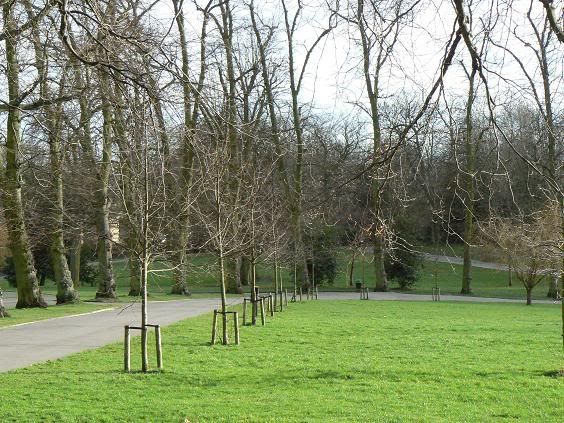
you can barely see the BT tower in the following photo

Here's debbie in her new sleeping bag that she bought late last year. no more rugging up with multiple scarves!

The cemetery is split into two halves, east and west. The eastern side was the slightly poorer side, consisting of layers and layers of individual graves. We went there first.

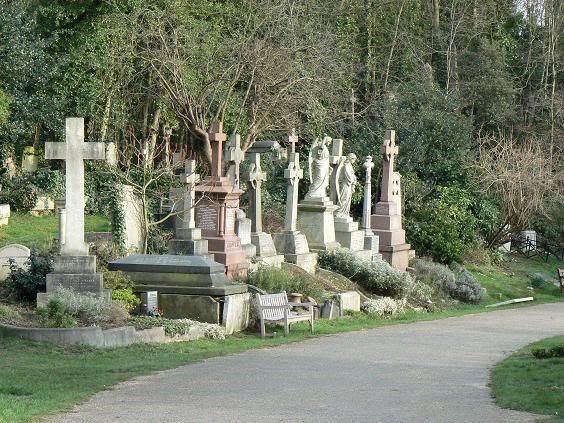
It started out really normal. although the density of graves was higher than we've seen at Toowong Cemetery, it so far looked like a fairly normal graveyard. there were a couple of large monuments:


And quite a few nice sculptures:
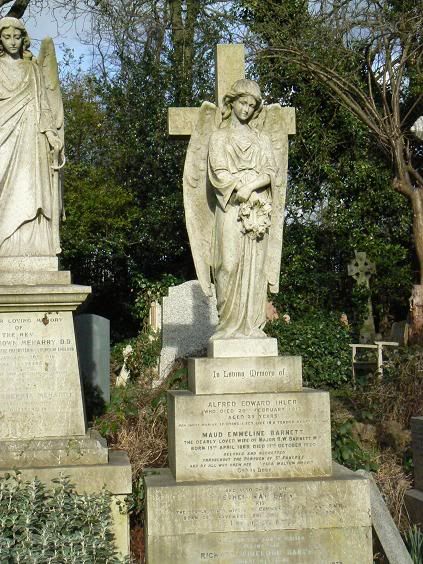
First port of call was Karl Marx's grave:

which was one of the few that we had planned on seeing. Not that we're devotee's of comunism, but I just wanted to see it because he's famous. there were another couple there who were obvious fans and a whole bunch of flowers and mementos were left at the base of the monument. The enscription says (sorry for the poor quality photo): "Workers of all lands unite. The philosophers have only interpreted the world in various ways. The point however, is to change it." his wife, daughter and grandson are also buried here and there is a plaque inset into the main monument detailing when they died etc.
After this, and the further away from the main entrance we got, the worse the state of the graveyard became.
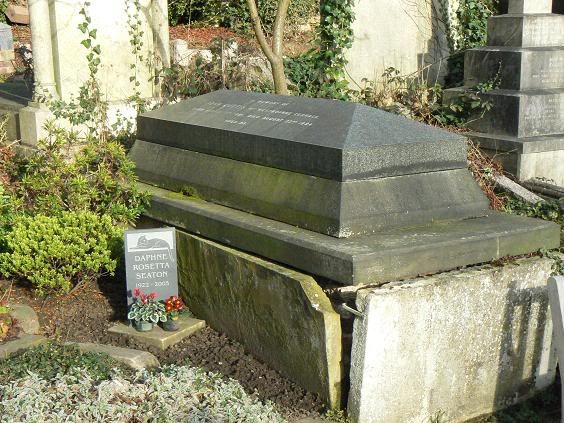
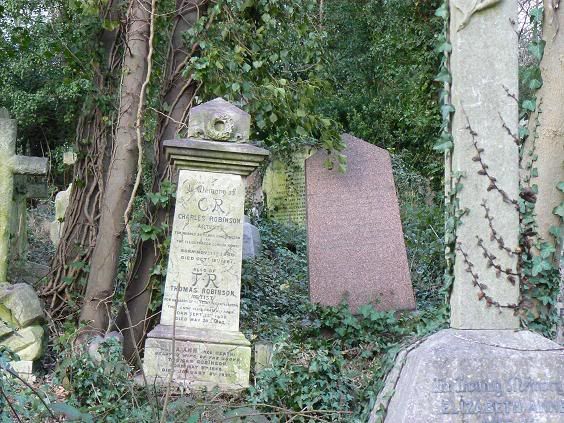
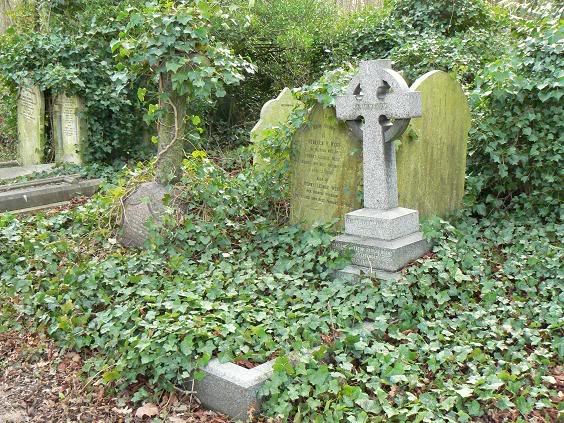
Basically just before WWII, the cemetery ceased to be financially viable and only one caretaker was left to look after all the monuments.
You can see the cemetery owners struggling for cash. they've piled grave apon grave in such away that you cannot get to a lot of them without stepping on other graves:
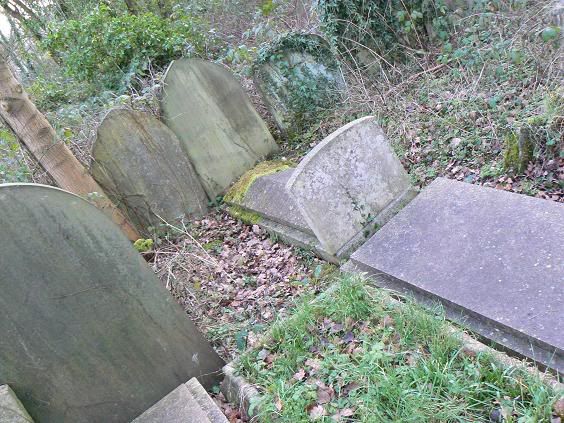
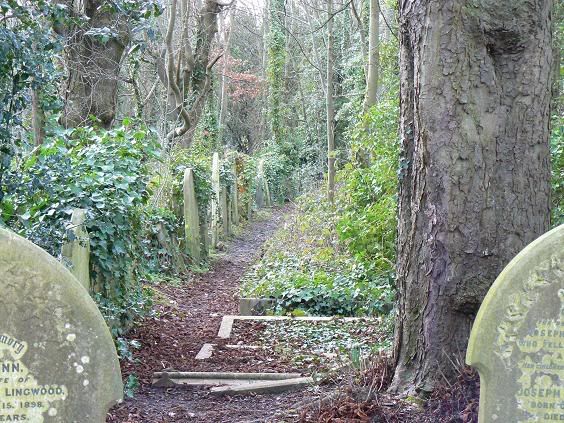
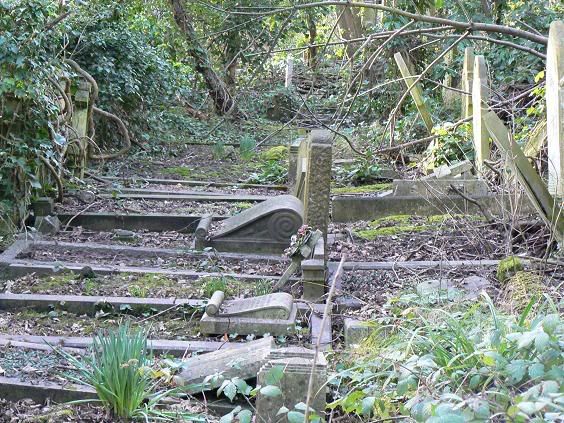
There were new graves mixed in with the old. as long-held family plots finally filled up. This one here was only placed there last year, whereas the one behind it was 100 years old and the one behind that was too overgrown and worn that I couldn't read it:
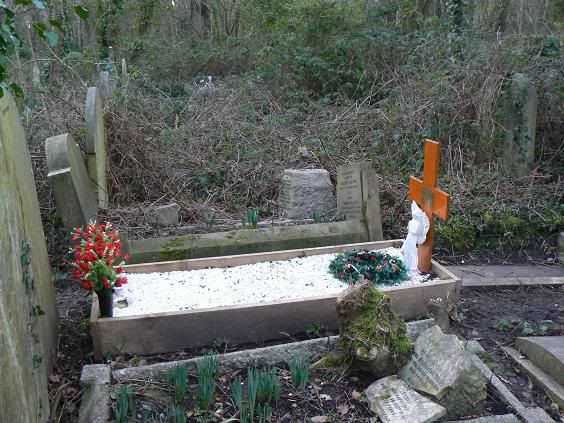
Some areas are so thick with both gravestones and underbrush that they're impossible to access without a machette (which I didn't have handy) and an Indiana Jones style bull whip:
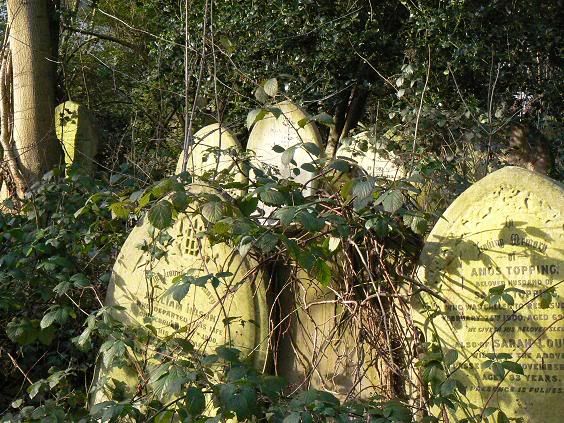
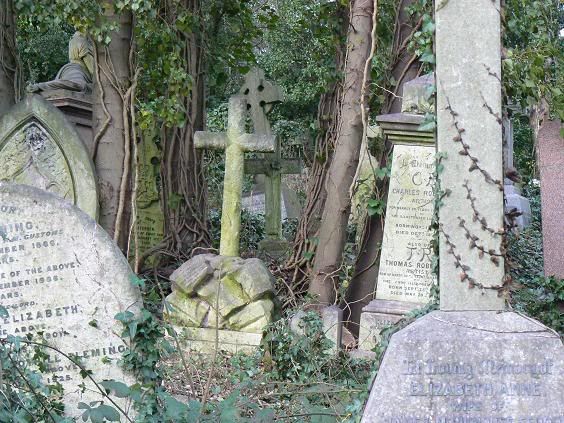
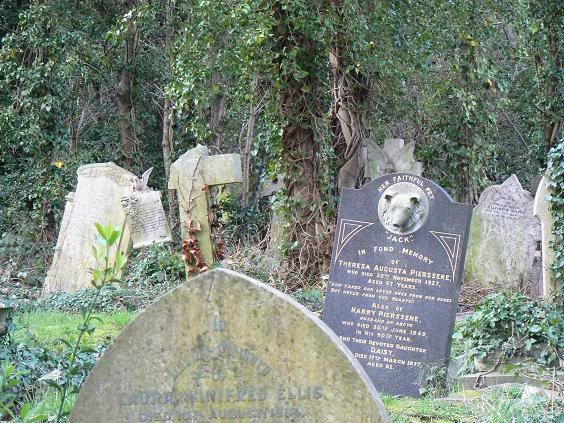
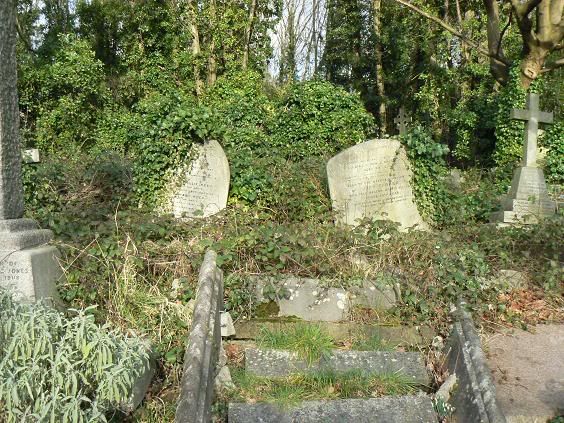
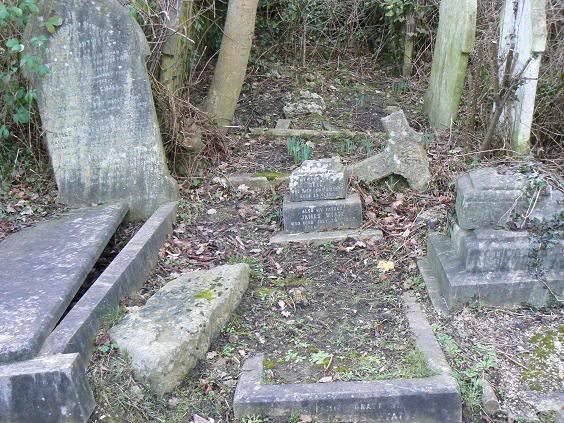
We did find what may have been a distant relative?

There were paths all over the place, most of which looked like something out of the movie Sleepy Hollow:

Some were too muddy to walk down:
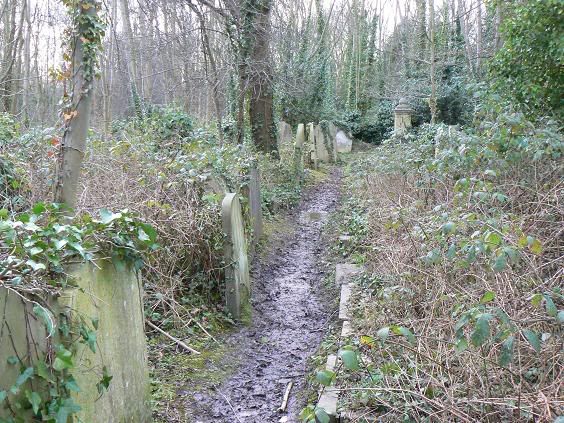
Some places it got quite spooky. this tree here was actually creaking in the wind like a wooden door left open:
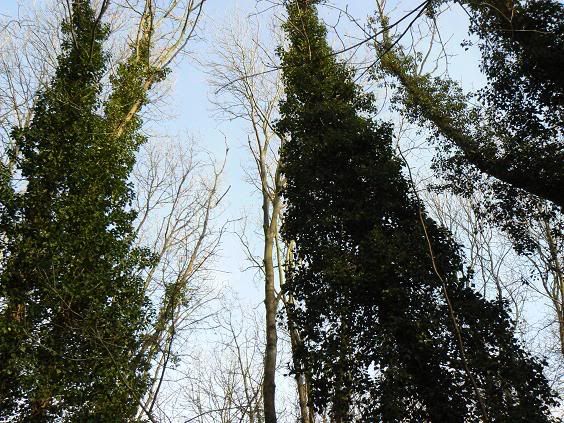
Here was a sad one:

The family of this person had obviously arrived on the same day we did. they'd placed hundreds of pounds worth of flowers and birthday cards and gifts. the heart shaped thing at the back is made up solid of live roses.
I think one of the reasons that I do like cemeteries though is because of my appreciation of irony:
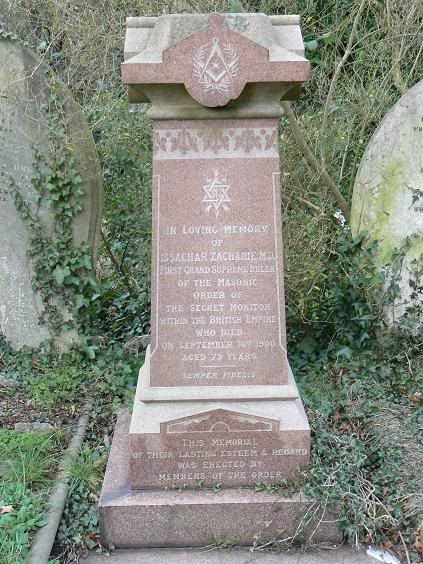
the inscription reads: "In loving memory of Issachar Zacharie M.D. first Grand Supreme Ruler of the Masonic Order of the Secret Monitor within the British Empire yada yada...."
So remind me when eventually I rule the world to call myself something like "the First Grand Supreme Excelent Bestest Awesomest Dude of the Totaly Amazing order of World Ruleage" or something as equally pompus It seems the done thing arround this part of the world.
At least one person seemed to appreciate (or used to appreciate) the pointlessness of self-gratifying inscriptions and just said what everyone's thinking anyway:
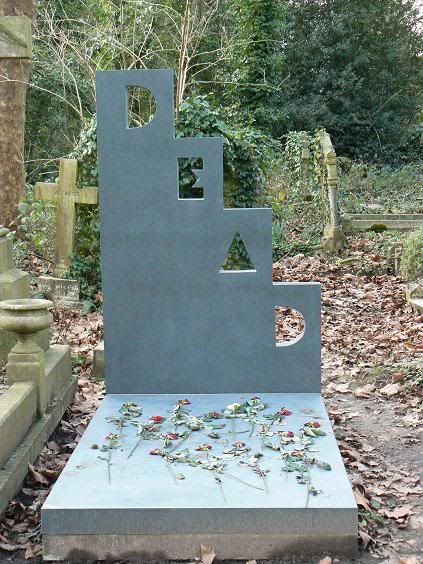
There was nothing else written on the above grave. no name, nothing.
Next up was the western half of the cemetery.
This part, due to the precarious state of a lot of the monuments, was only accessable by guided tour. and although I love exploring, we were very glad of the tour guide. partially because without here I probably would have gone and fallen through some ancient masonary, but mostly because she provided an insight that we wouldn't have had otherwise.
There are many beautiful sculptures in this half of the cemetery. the tour guide said that there was one scupturer who died and was buried in this part, who scuplted one particular famous sculpture of an angel. the people tasked with looking after the cemetery once it reopened in 1981 knew it was here, but couldn't find it. eventually it was found, the reason it was missed was because it was so overgrown with vines, they actually thought it was a tree. there are still many many monuments around the place that are nearly entirely encased in vines and leaves.
here was the main courtyard:
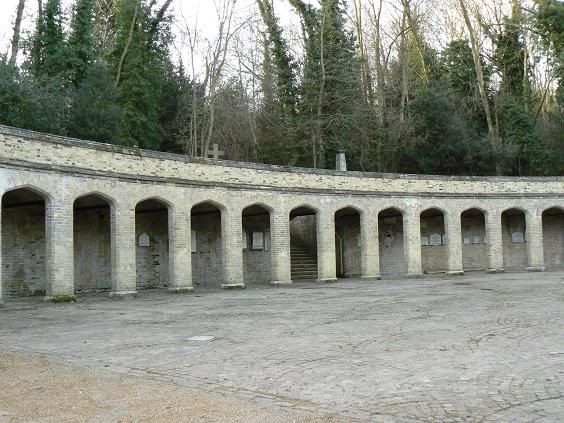
This wall was lined with niches for cremation urns. Here's an example:
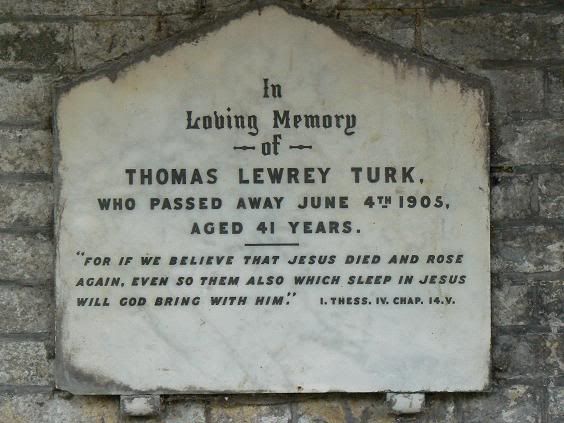
Here's debbie sitting under the war memorial waiting for the tour guide:
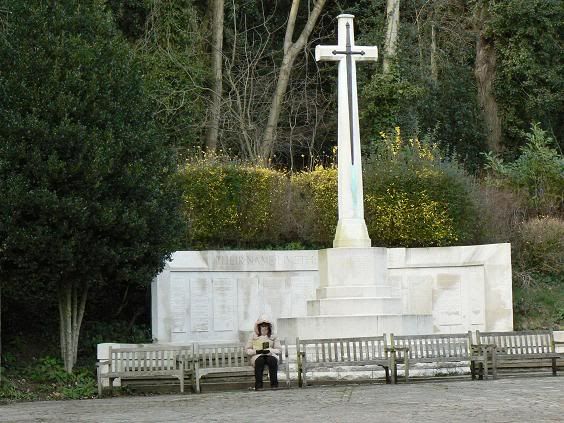
behind us were the two chapels:
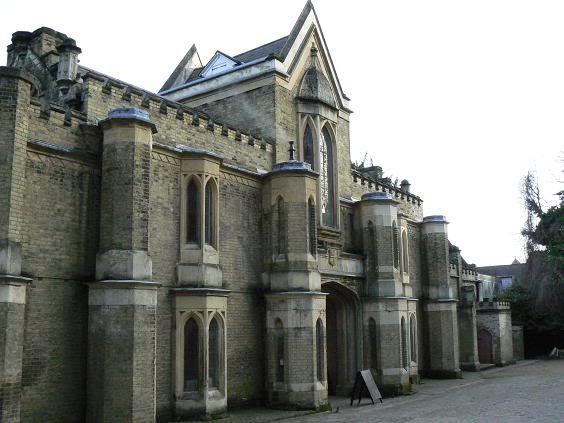
These two chapels (one on the left, one on the right, joined with the big pointy bit in the middle) were built for Anglicans (on the right) and Dissenters (everyone else, on the left). Apparently in Victorian times, the commonly held belief was that a dead Anglican must be buried on consecrated ground and so half the cemetery was concecrated and half was not (for everyone else). moreover once an anglican body had passed onto consecrated ground, it could not leave. This however, posed a problem because those that couldn't afford to be buried in the more expensive western side had to be carried over the road to the eastern side. And (so we were told) it is pretty much impossible to consecrate a road. so what to do, what to do...? "of course!" they said. and then went about doing the obvious thing of building a series of hydraulic lifts, a tunnel underneath the road and then consecrating the tunnel.
So there are somewhat less photos this section due to the fact that we were walking at the guide's pace and mostly listening to her. if we stopped to take photos we got left behind and missed interesting tidbits of information, so we attempted to maintain a ballance. often though we were so engrossed in what the guide was saying that we forgot the whole photo thing unfortunately.
There were many large monuments like this:
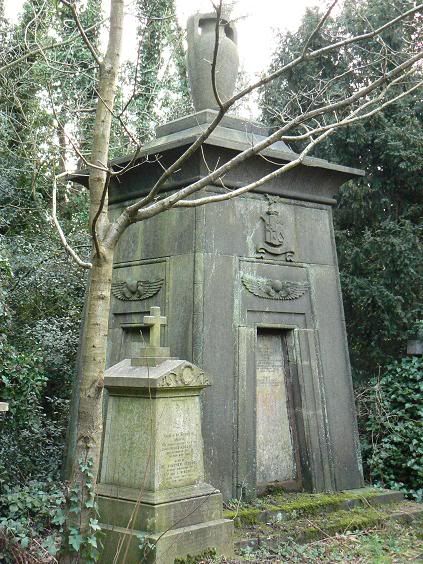
and the pathways were wider and more organised:
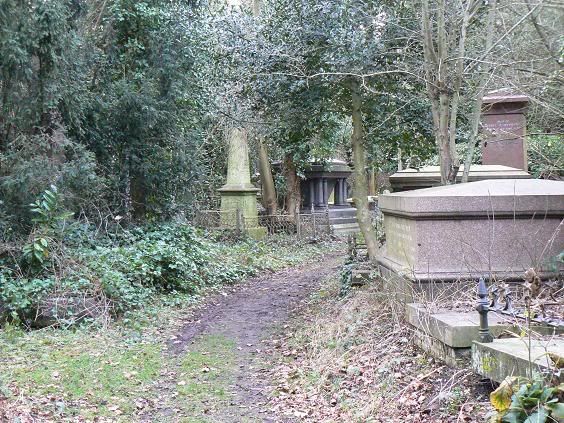
I asked why some monuments (like the above) said "family Crypt" when there was quite obviously only rooom for one or two people. the guide said that most people with the larger monuments also owned the ground on the path and that if you dig up the path you'll find steps leading down into rooms up to 20 feet underground with shelves on each wall, with enough room for whole families and their decendants. I was beginning to understand why the tour guide was necessary. I didn't have any wish to fall through the ground into a mass grave.
here's an example of one:
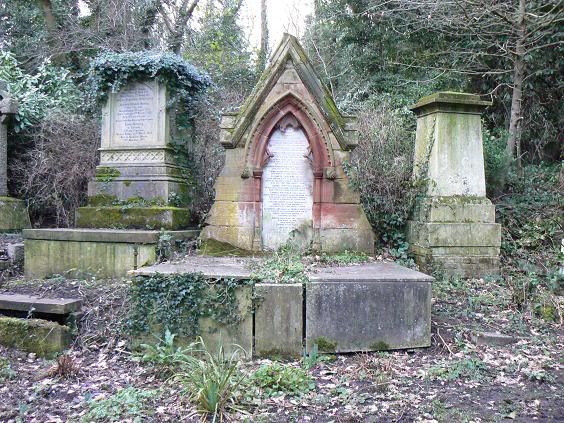
see the stones at the front have come away. they are designed to. one would remove them, and dig away the ground to reveal the steps going down to the crypt. most of these would then also have a locked iron door which would be opened ceremoniously to accept the next coffin. same deal with the grave just to the left.
you can see the plaque on the headstone has a very long list of names of all the people laid to rest here. On this one I counted 13 names. and just to emphasise the point... due to the victorian aversion to cremation, these would have all been coffins, indicating that there would be a large vault underneath, extending down deep and into the hillside. This grave site was tiny compared to others we saw.
there were quite a few different sort of headstones:
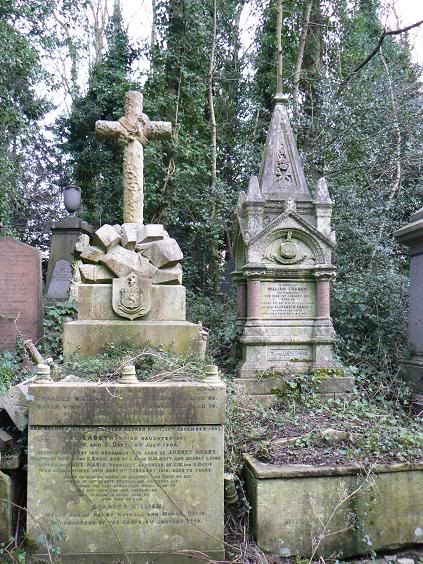
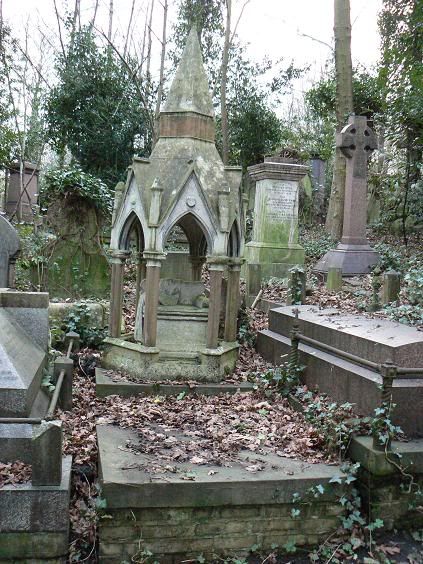
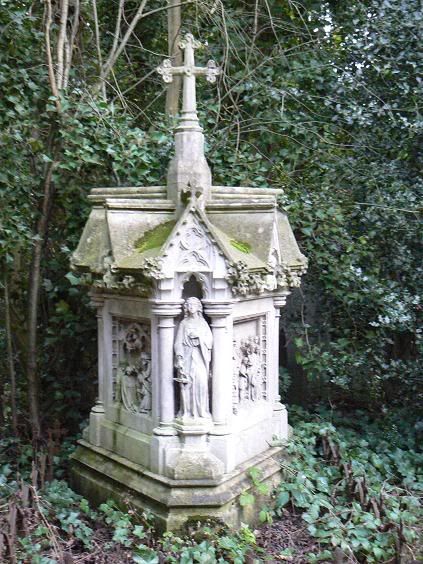
Then we came to the famous "Circle of Lebanon":
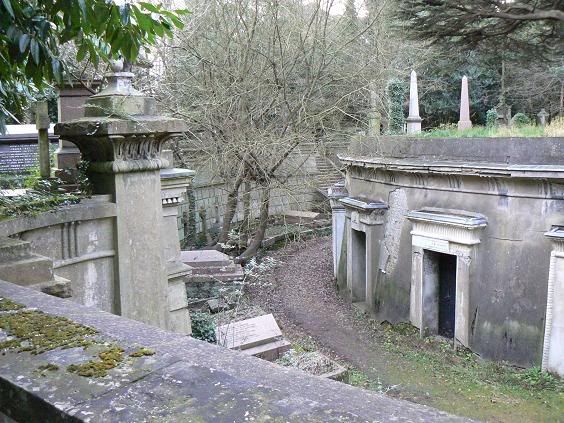
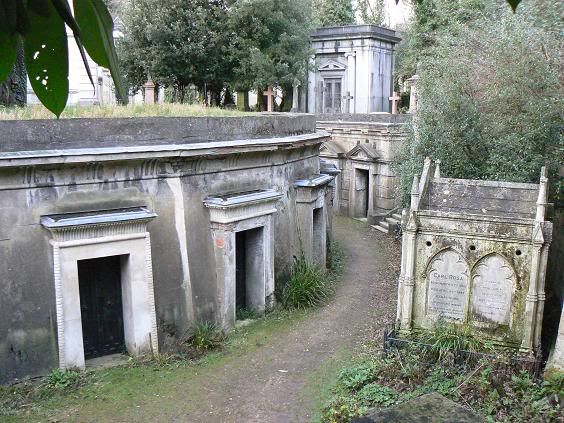
The reason it's called the circle of Lebanon is firstly because it's circular... and secondly because there's a large Lebonese cedar growing in the middle:
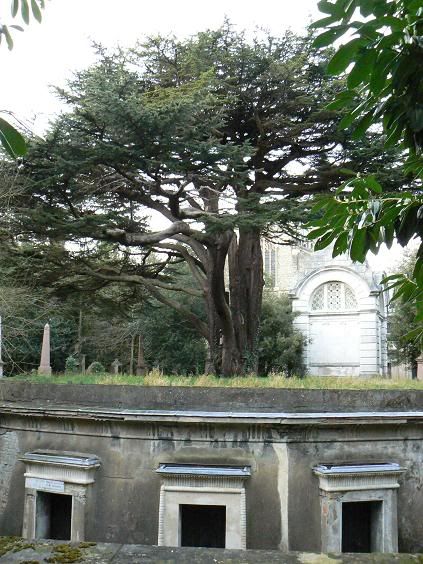
The story goes that when these grounds were converted into a cemetery, the landscapers decided to create a feature arround the reletively newly planted cedar. now the thing is with plants from that part of the world is that they don't generally fare all that well in the weather that we have here. their roots tend to grow outwards and the trees are easily blown over by high winds. but with this one, it's been planted in what is essentially a giant plant pot, thus forcing its roots downwards, and so it has lasted a few hundred years.
the main entrance to this was actually one level down:
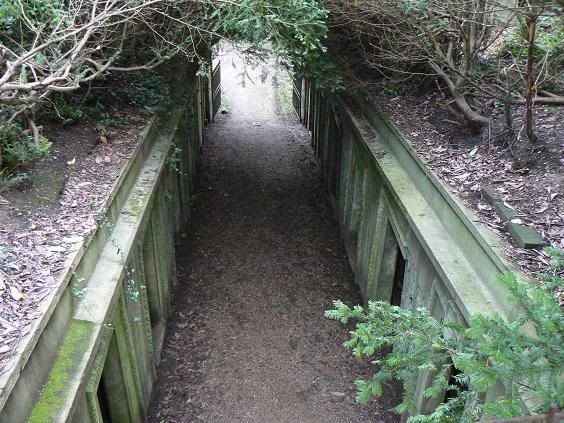
So we went around and down and found the proper entrance:
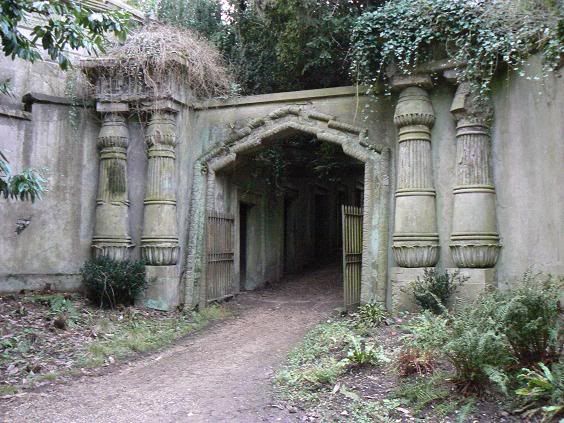
I didn't manage to get it in the photo, but there are obilisks on either side, just outside the frame that are twice as high as the wall.
The guide explained that there were various trends in burials. there was the "neo-classical revival", the "gothic revival" and the "egyptomania" (yes, that's the proper word for it, I didn't make it up). so a lot of the tombs reflect the trend at the time.
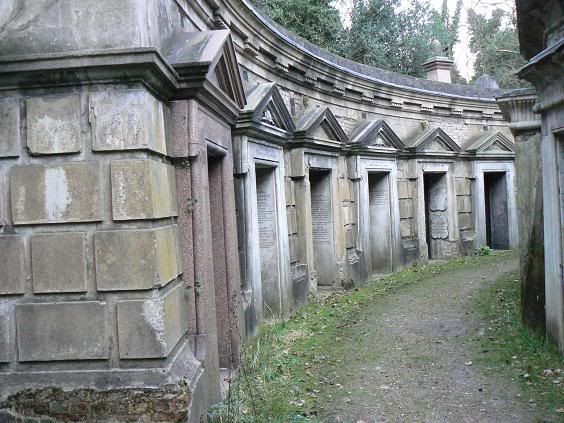
here's the circle from the ground:
Every one of these doors had two torches depcted upside down as a symbol of life extinguished:
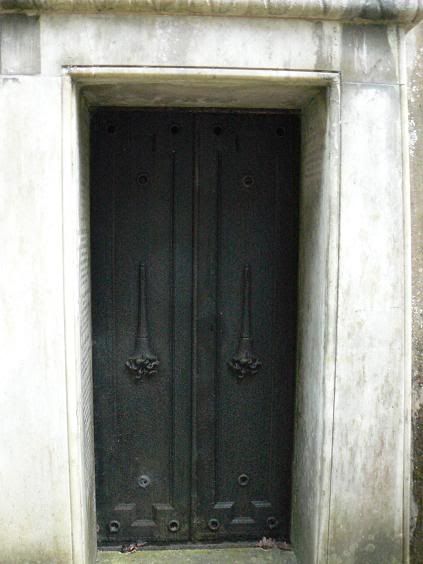
That's about it really. we passed by quite a few other far more impressive crypts but I totally forgot to take photos because of the commentary that the guide was giving. one particular moresaleum was built by a wealthy man for his 8 year old daughter, with a solid marble interior and a 3 story high roof covered in gold at a cost (in todays money) of about 3 million pounds. they got quite a bit of use out of it though as the rest of the family was also buried in there later on. waste not, want not I guess.
on arriving home however I realised that we had missed two graves that I had wanted to visit. douglas adams (wrote hich hikers guide to the Galaxy) and Michael Faraday (discovered electromagnetic induction), I really wanted to see if the rumours were true about him rolling over in his grave and producing a voltage :-).
So anyway, that's the end of this post - sorry for the morbidity - hopefully the next post will cheer you up, because on Sunday we went to Leeds Castle!!!! yay!
pictures on their way :-D
Andrew.
No comments:
Post a Comment